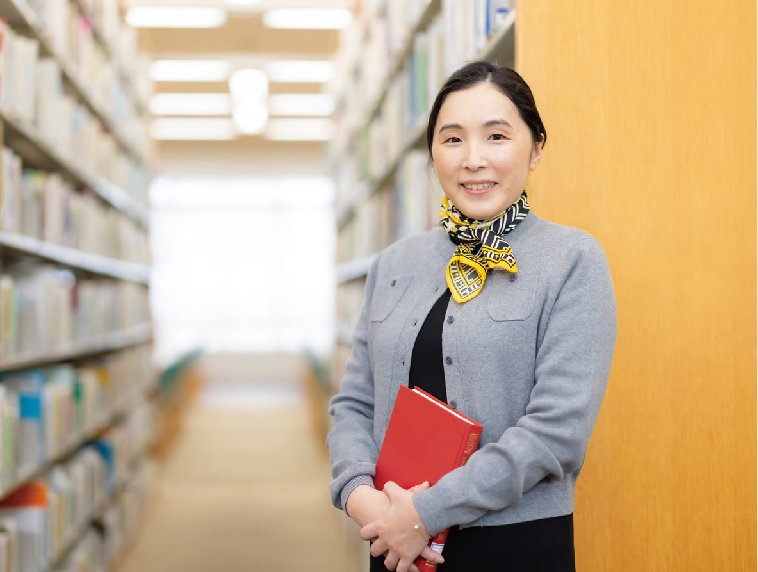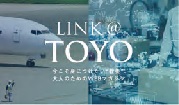About Toyo University The Gendai Gakusei Hyakunin Can Be Easily Enjoyed by Anyone
35th Anniversary Interview
The Gendai Gakusei Hyakunin Can Be Easily Enjoyed by Anyone
We asked the head of the Gendai Gakusei Hyakunin Isshu Selection Committee, Yuko Takayanagi, (Associate Professor, Faculty of Letters), about the appeal of the Gendai Gakusei Hyakunin Isshu and this year’s selected works.

Associate Professor, Department of Japanese Literature and Culture, Faculty of Letters
Yuko Takayanagi
<Profile>
Associate Professor, Department of Japanese Literature and Culture, Faculty of Letters Ph.D. in Literature Specialist in Japanese poetry and medieval literature Member of the Selection Committee since the 33rd Toyo University Gendai Gakusei Hyakunin Isshu; head of the Selection Committee for the 34th and 35th Gendai Gakusei Hyakunin Isshu. Published papers include: “Chikanaga Kanroji’s Poetry Readings: One Aspect of the History of Poems in the Muromachi Era” (Japanese Language and Literature, Volume 86, Issue 11) and “Princess Shikishi’s Infancy as a Poet” (Waka Poetry Studies, Issue 106), and others.
1.Tankas are actually logical. The enjoyment of deciphering tankas
My research focuses on tankas written in the medieval period (from around the 12th to 16th centuries). In my research, I aim to shed light on Japanese poetry from various perspectives by paying attention to the poets and the places where poems were composed and exploring the meaning and interpretation of poems from their style. People often say that they do not understand what Japanese poetry or tankas are. Until high school, I was also convinced that tanka were abstract and required sensibility to write. However, at university, I met a professor who was researching Japanese poetry. This professor taught me that tankas are actually very straightforward and can be read logically, and I have been fascinated with the profoundness of tanka ever since. For example, hototogisu, little cuckoo. This is a bird of great significance in the world of classical Japanese literature, and there is a rule that Japanese poems that include hototogisu are to be interpreted as a “longing heart.” In the 31 syllable poem arranged in the 5-7-5-7-7 pattern, the reader can appreciate how the poet’s longing heart is expressed and understand the true meaning. This is part of the fun of tankas.
2.It is easy to start enjoying tankas.
With its fixed 31-syllable format, the appeal of tankas lies in the fact that they can be easily composed by anyone. Another reason for the long-lasting popularity of tankas is that the rhythm of 5-7-5-7-7 is very familiar to Japanese people.
31 characters provide the perfect balance to give minimal information to allow the reader’s imagination to fill in the gaps without expressing everything. I think that the style of tankas is easy for readers to empathize with because while conveying its message, tanka leave the discretion of interpretation to the reader. For example, in the Gendai Gakusei Hyakunin Isshu, there is a tanka based on the “locus of a moving point” in mathematics. The common understanding of the moving point evokes scenes related to each reader’s perception of the moving point, such as classrooms, formula written on the blackboard or memories with friends from school. The tankas submitted to the Gendai Gakusei Hyakunin Isshu appeal to many readers because they are often based on common matters that many people have experienced or felt during their time at school.
3.When reading tankas, don’t think, feel.
Every year the Gendai Gakusei Hyakunin Isshu receives tankas that realistically depict daily life from the unique perspective of students of all ages, based on the theme of “students’ present perspectives and lifestyle.” This year’s submissions have been flexibly adapted to students’ current situation where they cannot enjoy a normal student life due to COVID-19 restrictions. The students’ tankas gave us an insight into their feelings. They included sentiments by putting a positive spin on facemasks as a fashion accessory and expressing their frustration at not being able to do club activities as they like. On the other hand, there are many tankas written about timeless topics to young people such as love, and concerns about studies and what to do after school. Through student’s tankas, people of all ages can enjoy the “changing youth” and “unchanged youth” that reflect the times in which they were written.
The way each tanka is interpreted and the points empathized with will differ depending on the generation and perspective of the reader. I do not want people to think that reading tanka is difficult, but instead, I want them to cherish the parts that they emphasize with, and fully immerse themselves in the feelings of youth expressed in the works.
4.The tradition of the Gendai Gakusei Hyakunin Isshu has been passed down for 35 years.
This year marked the 35th anniversary of the Gendai Gakusei Hyakunin Isshu. The Gendai Gakusei Hyakunin Isshu is unrivaled in size for a student tanka competition, and many fans look forward to it every year. Some students decide to enter Toyo University in connection with the Gendai Gakusei Hyakunin Isshu. The students who compose the tanka vary from one generation to the next, but their work will remain as something universal. Also, by continuing to hold the competition every year, we can see how students have changed over the years. For example, we are likely to see tankas that express various emotions when the COVID-19 situation ends.I believe that there is significant value in creating tankas that reveal students’ innner thoughts and attitude, which are not portrayed in the news or through other media.
I would be happy if through the Gendai Gakusei Hyakunin Isshu, people become interested in classical literature, experience past works, and become aware of what students at the time felt during their youth and are surprised at the difference between the past and today.
●My recommended book for getting to grips with tanka
A practical book in a drill format where readers do one exercise a day for 30 days, learn essential knowledge and how to write a tanka. The author, professor Nakagawa, is a member of the Gendai Gakusei Hyakunin Isshu Selection Committee. I recommend this easy-to-understand book to people who want to learn about tanka from the basics.
| “30-Day Exercise: An Easy Tanka Workbook for Beginners” Author: Sawako Nakagawa, Publisher: Ikeda Shoten |
 |
●Rare Materials Related to the Hyakunin Isshu
Many rare books, including gorgeous picture scrolls, picture books, and karuta related to the Hyakunin Isshu, are stored at the Toyo University Library. This is one of Japan’s most prominent collections. The collection is fulfilling the role of conveying Japanese culture to future generations.
|
Hyakunin Isshu Karuta  |
Ogura Nazorae Hyakunin Isshu
|
An interview with Associate Professor Takayanagi titled “Why Has Modern Japanese Poetry Captured the Heart of Generation Z? ‘Likes’ Hold the Key to the Recent Popularity of Tanka” is available at LINK@TOYO(English unavailable).
https://www.toyo.ac.jp/link-toyo/culture/gendaitanka/
